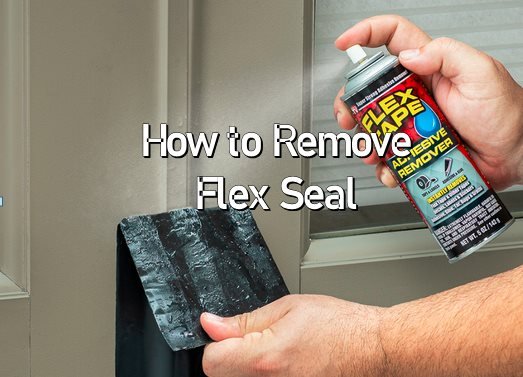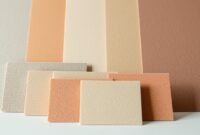Ever found yourself stuck with a stubborn Flex Seal mess? Many DIY enthusiasts and homeowners struggle with sealant residue cleaning. It can ruin surfaces and cause frustration.
Removing Flex Seal isn’t just about scrubbing hard. It’s about using the right techniques for different materials. I’ll show you proven methods to clean Flex Seal effectively.
Whether you’re dealing with metal, fabric, wood, or automotive surfaces, my guide will help. You’ll learn which solvents work best and how to use them safely.

From acetone for metal to mineral spirits for wood and fabric, I’ll share professional tips. You’ll learn how to remove sealant stains without damaging your surfaces. Say goodbye to unwanted Flex Seal residue!
Read also: Can You Paint Over Flex Seal ?
Understanding Flex Seal and Its Properties
As a DIY enthusiast, I’ve found that flex seal spray is special. It has amazing adhesive powers, unlike other sealants. Its flexibility makes it great for many repair jobs. But, knowing how it works is key for using it right and removing it later.
- Exceptional waterproof properties
- Rubberized coating that expands and contracts
- Ability to seal gaps and cracks instantly
- Resistance to extreme temperatures
What Makes Flex Seal Unique
My experience shows that flex seal spray makes a strong, flexible seal. It can handle temperatures from -40°F to 200°F. This makes it very useful for many different jobs.
Challenges in Removal
Removing DIY sealants like Flex Seal can be tough. Its strong adhesive makes it hard to remove. Fixing mistakes with Flex Seal needs special methods and patience.
Common Applications and Possible Problems
Flex Seal is great for many repairs, but be careful where you use it. Don’t use it on gas tanks, car tires, or where food-grade sealants are needed. Knowing these limits helps avoid safety issues and ensures it works well.
- Best for roof repairs
- Useful in marine applications
- Effective for household leak prevention
- Not suitable for structural repairs
Essential Safety Precautions Before Removal
When you start to remove Flex Seal, safety is key. You need to be ready and know the risks. I’ll show you important steps to keep you safe while removing Flex Seal.
- Protective safety glasses
- Chemical-resistant gloves
- Respirator mask
- Well-ventilated workspace
- Long-sleeve protective clothing
It’s important to know what surface you’re working on. Each material needs a special way to avoid damage when removing Flex Seal.
| Surface Type | Safety Recommendation | Precaution Level |
|---|---|---|
| Metal Surfaces | Use acetone carefully | High |
| Fabric | Test mineral spirits on small area | Medium |
| Automotive Surfaces | Avoid direct heat sources | Very High |
Here are some key safety tips for removing Flex Seal:
- Always work in a well-ventilated area
- Avoid open flames near chemical solvents
- Wear protective eyewear at all times
- Keep chemical removers away from skin and eyes
- Read solvent instructions thoroughly before use
If you’re unsure about a removal method, call Flex Seal’s customer support at (833) 411-3539. They can give you expert advice. Always put safety first for a successful and safe Flex Seal removal.
Tools and Materials Needed for Flex Seal Removal
Removing Flex Seal needs careful preparation and the right tools. I’ve found that using the best tools makes a big difference. It makes the removal process easier.
First, gather the essential materials. Choose the right solvents and protective gear for a safe and effective clean-up.
Chemical Solvents for Different Surfaces
- Metal Surfaces: Acetone works best for breaking down Flex Seal
- Wood and Fabric: Mineral spirits provide gentle yet effective removal
- Automotive Applications: Toluene (paint thinner) serves as a powerful solvent
Protective Equipment Essentials
Safety is key during the removal process. Here’s what you’ll need:
- Chemical-resistant rubber gloves
- Safety goggles
- Respirator mask
- Long-sleeve protective clothing
Surface-Specific Removal Tools
Different surfaces need different tools. Keep these handy:
- Plastic scrapers for gentle surface removal
- Microfiber rags for cleaning
- Soft-bristled brushes
- Disposable work gloves
Pro tip: Always test your solvent on a small, inconspicuous area first. This prevents damage. Remember, patience is key in the Flex Seal removal process.
How to Remove Flex Seal from Metal Surfaces

Removing Flex Seal from metal surfaces needs a careful approach and the right tools. Metal surfaces require precise methods to avoid damage and clean the material effectively.
I’ll show you the best ways to remove Flex Seal from various metal surfaces. The steps involve strategic actions and the right solvents to keep the metal clean and undamaged.
- Identify the metal surface type
- Select appropriate cleaning solvent
- Prepare protective equipment
- Test removal method on small area
Acetone is the top solvent for cleaning metal surfaces. When using acetone for Flex Seal removal, follow these important tips:
- Work in a well-ventilated area
- Use protective gloves
- Apply acetone with a clean cloth
- Gently scrub the affected area
Timing is key when removing Flex Seal. Most metal surfaces need 30 to 60 minutes of careful treatment. This depends on the sealant’s thickness and how it was applied.
| Metal Surface | Recommended Solvent | Removal Time |
|---|---|---|
| Window Frames | Acetone | 30-45 minutes |
| Automotive Surfaces | Toluene | 45-60 minutes |
| General Metal | Mineral Spirits | 30-50 minutes |
Pro tip: Always test your chosen solvent on a small, hidden area first. Use gentle pressure and patience to prevent damage during the removal process.
Removing Flex Seal from Fabric and Upholstery
Removing Flex Seal from fabric can be challenging. It requires careful techniques to avoid damage. Knowing the right steps can protect your upholstery and clothes from stains.
Mineral spirits are your best tool for removing Flex Seal from fabric. They are gentler than harsh chemicals that could harm your materials.
Read also: Does Flex Seal Work on Concrete Material?
Specific Techniques for Different Fabrics
- Cotton fabrics: Use mineral spirits with a soft white cloth
- Synthetic materials: Apply solvent sparingly and blot gently
- Delicate fabrics: Consider professional cleaning services
Dealing with Stubborn Stains
For tough stains, follow these steps:
- Test mineral spirits on a hidden fabric area
- Blot the stain – never scrub
- Repeat application if necessary
- Allow fabric to air dry completely
Prevention of Fabric Damage
| Fabric Type | Recommended Solvent | Removal Difficulty |
|---|---|---|
| Cotton | Mineral Spirits | Low |
| Polyester | Toluene | Medium |
| Silk | Professional Cleaning | High |
When removing Flex Seal, be patient. Work slowly and carefully to avoid damage.
Techniques for Wood Surface Cleaning
Removing Flex Seal from wood surfaces needs a careful approach and the right techniques. As a DIY enthusiast, I’ve found that different wood types require specific cleaning methods. This prevents damage to the wood.
When removing Flex Seal, mineral spirits are your main tool. These solvents are powerful and can break down the sealant without harming the surface too much.
- Select high-quality mineral spirits
- Wear protective gloves and eye protection
- Work in a well-ventilated area
- Test on a small, hidden wood section first
Before starting, know that mineral spirits might change the color of wood stains. It’s wise to test the solvent on a hidden area first. This helps avoid color changes or reactions with the wood.
For painted wood, be extra careful. Use gentle scrubbing with mineral spirits to remove Flex Seal without damaging the paint. Soft cloths or non-abrasive sponges are best to avoid scratches.
- Apply mineral spirits sparingly
- Use circular motions for even application
- Wipe away dissolved sealant immediately
- Repeat process if necessary
Removing sealant residue takes time. Let the mineral spirits work for a while. This ensures a safe and thorough removal process.
Automotive Surface Treatment and Care
Removing Flex Seal from car surfaces needs careful steps. I’ll show you how to protect your car and remove unwanted sealant safely.
It’s important to know how to treat car surfaces. Each material needs a special way to avoid damage and remove Flex Seal well.
Paint-Safe Removal Methods
Removing Flex Seal from car paint needs to be precise. Here are some safe methods:
- Use toluene carefully and with caution
- Use soft rubbing motions with a microfiber cloth
- Test on a hidden area first
- Work in small areas to avoid paint damage
Interior Cleaning Procedures
Interior surfaces need a different method for Flex Seal removal. Fabric and upholstery must be treated gently to avoid damage.
| Surface Type | Recommended Removal Method | Caution Level |
|---|---|---|
| Leather Seats | Mild solvent + microfiber cloth | High |
| Fabric Upholstery | Specialized fabric cleaner | Medium |
| Vinyl Surfaces | Rubbing alcohol | Low |
Professional Tips for Vehicle Care
For tough Flex Seal removal, follow these expert tips:
- Get help from a detailing service for hard cases
- Buy top-quality car cleaning products
- Keep other surfaces safe during removal
- Wear protective gear to avoid chemical harm
Patience and careful steps are key for removing Flex Seal from car surfaces. Always put your car’s finish and safety first during removal.
Removing Fresh vs. Dried Flex Seal

Understanding the difference between fresh and dried Flex Seal is key. Fresh Flex Seal is simpler to remove than dried Flex Seal. It needs different methods and techniques.
Fresh Flex Seal Removal
For wet, fresh Flex Seal, try these steps:
- Use a clean, dry cloth or paper towel
- Gently wipe away the fresh sealant immediately
- Work quickly before it sets
Dried Flex Seal Challenges
Dried Flex Seal is harder to remove. The process gets more complex when it’s fully cured.
| Surface Type | Recommended Solvent | Removal Difficulty |
|---|---|---|
| Metal | Acetone | Moderate |
| Wood | Mineral Spirits | High |
| Fabric | Denatured Alcohol | Very High |
Start with the mildest solvent for dried Flex Seal. Acetone is good for metal, and mineral spirits work for wood and fabric. Always test a small area first to avoid damage.
Safety Precautions
- Wear protective eyewear
- Work in a well-ventilated area
- Use chemical-resistant gloves
- Avoid prolonged skin contact with solvents
Each surface needs a unique approach for removing Flex Seal. Be patient and careful to avoid more damage.
Common Mistakes to Avoid During Removal
Removing flex seal can be tricky. I’ve learned that DIY sealant removal needs careful attention to avoid mistakes. Knowing common pitfalls helps protect your surfaces and ensures successful removal.
Surface-Specific Errors
Different surfaces need different approaches for flex seal removal. Here are some mistakes to avoid:
- Never use harsh chemicals on delicate materials
- Test removal solutions on small, hidden areas first
- Recognize that each surface requires specific treatment
Chemical Usage Warnings
Choosing the right chemicals is key in DIY sealant removal. Some practices can damage your surfaces:
- Avoid bleach-based solutions completely
- Skip acetone on fabrics or upholstery
- Steer clear of strong solvents on painted surfaces
Timing and Application Mistakes
Timing is critical for successful flex seal removal. Here are my top tips:
- Act quickly before Flex Seal fully cures
- Work methodically to prevent spreading
- Use protective equipment always
By following these guidelines, you’ll reduce risks and improve your removal results. Patience and careful technique are essential in this delicate process.
Conclusion
Removing Flex Seal can be tough. It needs patience, the right tools, and careful steps. Each surface, like metal, fabric, wood, or car parts, needs a special way to remove Flex Seal.
Start with the softest removal methods first. Always test on a small, hidden area. Chemicals like isopropyl alcohol or acetone work well, but use them carefully and wear protective gear.
If DIY methods don’t work, get professional help. Some Flex Seal jobs, like on car paint, need experts. It’s better to protect the surface than to remove Flex Seal completely.
My last tip is to be methodical when removing Flex Seal. Learn about your surface, get the right tools, and work in a well-ventilated area. With the right steps, you can fix those hard Flex Seal jobs and make your surfaces look new again.


